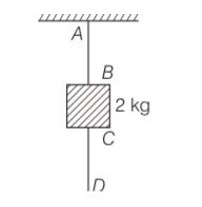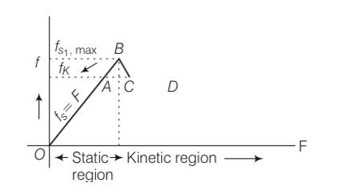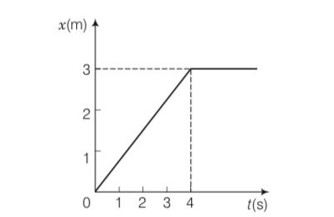Physics NCERT Exemplar Solutions Class 11th Chapter Five
Get insights from 67 questions on Physics NCERT Exemplar Solutions Class 11th Chapter Five, answered by students, alumni, and experts. You may also ask and answer any question you like about Physics NCERT Exemplar Solutions Class 11th Chapter Five
Follow Ask QuestionQuestions
Discussions
Active Users
Followers
New answer posted
4 months agoContributor-Level 10
This is a Short Answer type Questions as classified in NCERT Exemplar
Explanation – when the lower thread CD is pulled with a * the thread Cd itself break because the thread CD is not transmitted to the thread Ab instantly.
New answer posted
4 months agoContributor-Level 10
This is a Short Answer type Questions as classified in NCERT Exemplar
Explanation- The thread AB will break earlier than the thread CD. This is because force acting on thread CD= applied force and force acting on thread AB = applied force +weight of 2kg mass. Hence force acting on thread Ab is larger than the force acting on thread CD
New answer posted
4 months agoContributor-Level 10
This is a Short Answer type Questions as classified in NCERT Exemplar
Explanation- while going up a mountain the force of friction acting on a vehicle of mass m is f=
= To avoid skidding force of friction should be large and therefore cos should be large and should be small. That is why mountain roads generally made winding upwards rather than going straight up.
New answer posted
4 months agoContributor-Level 10
This is a Short Answer type Questions as classified in NCERT Exemplar
Explanation- mass of the objects =0.5kg
Speed of the objects =25m/s
a) impulse imparted = change in momentum = mv-mu
= m (v-u)= 0.5 (25-0)=12.5N-s
b) velocity of the object after rebounding= 25/2=-12.5m/s
change in momentum = m (v-u)= 0.5 (-12.5-25)= -18.75N-s
New answer posted
4 months agoContributor-Level 10
This is a Short Answer type Questions as classified in NCERT Exemplar
Explanation-when she falls on cemented floor the time is very less so force is very large which increase the pain but F =change in momentum =constant . while in muddy ground the time is very large as compared to cemented floor so less will be applied . so she feel less pain.
New answer posted
4 months agoContributor-Level 10
This is a Short Answer type Questions as classified in NCERT Exemplar
Explanation- porcelain objects are wrapped in paper while transporting because they are very fragile can easily break. while we wrapped them in paper to increase the time so the damage to them is as less as possible.
New answer posted
4 months agoContributor-Level 10
This is a Short Answer type Questions as classified in NCERT Exemplar
Explanation -the frictional force shown on vertical axis and the applied force shown on horizontal axis. The portion OA of graph represents static friction which is a self-adjusting .in this f=F.
Whereas the point B represents force of limiting friction . Cd|OX represents kinetic friction. The force of kinetic friction does not change by applying force.
New answer posted
4 months agoContributor-Level 10
This is a Short Answer type Questions as classified in NCERT Exemplar
Explantion - given mass of the body = 2kg
Velocity of the body = 2t? +t2?
Velocity of body at t=2s
V= 2 ? +22? = 4? +4?
Momentum of body =mv = 2 (4? +4? )= 8? +8? kgm/s
Acceleration a= dv/dt
= d/dt (2t? +t2? )= 2? +2t?
At t=2s, a= (2i+2 (2)j)= 2? +4?
Force acting on the body F=ma
=2 (2? +4? )
= 4? +8? N
New answer posted
4 months agoContributor-Level 10
This is a Short Answer type Questions as classified in NCERT Exemplar
Explanation- when a person driving car suddenly applies brakes the lower comes to rest but the upper part of the body will remain in motion. so if the driver not wearing seat belt will falls forward and his head hit against the steering wheel.
New answer posted
4 months agoContributor-Level 10
This is a Short Answer type Questions as classified in NCERT Exemplar
Explanation- mass of body =2kg
From the above graph the body at x=0 when t=0 so body at rest.
So impulse is also zero.
From t=0s to t=4s graph becomes straight line which shows body is at uniform velocity
Beyond 4s graph is parallel to time axis, body is at rest
So tan =3/4
Impulse at t=4s= change in momentum= mv-mu
=m (v-u)
= 2 (0-3/4)= -3/2kgm/s
Taking an Exam? Selecting a College?
Get authentic answers from experts, students and alumni that you won't find anywhere else
Sign Up on ShikshaOn Shiksha, get access to
- 65k Colleges
- 1.2k Exams
- 679k Reviews
- 1800k Answers



